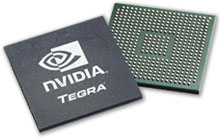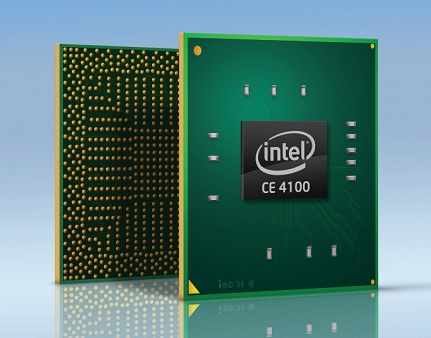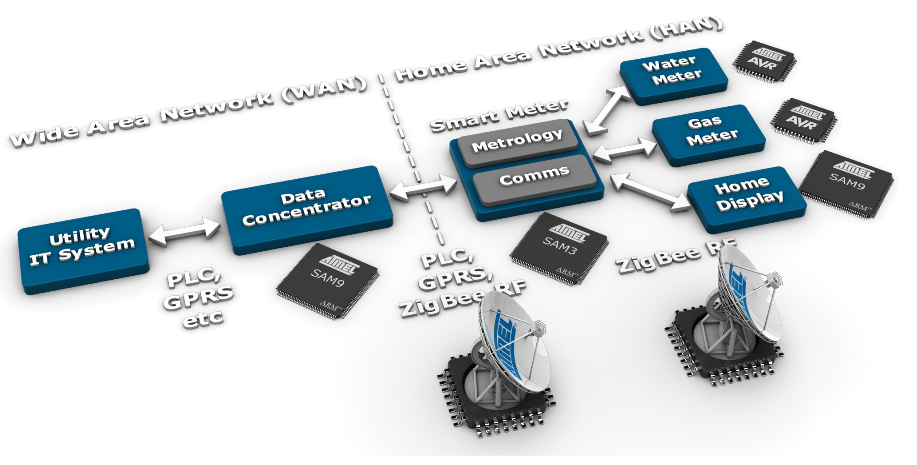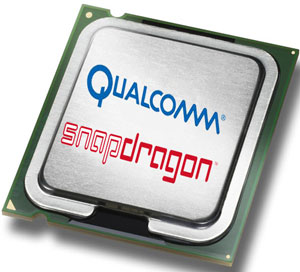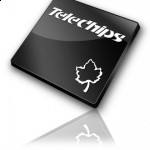NVidia Tegra 2 is currently one of the most powerful processor used in smartphones and tablets such as the upcoming LG Optimus 2X smartphone or the new version of Samsung Galaxy Tab. NVidia describes the processor as follows: NVIDIA® Tegra™ 2 is the world’s most advanced mobile processor, featuring the world’s first mobile dual-core CPU for up to 2x faster Web browsing; the world’s only ultra-low power (ULP) NVIDIA® GeForce® GPU for up to 5x faster gaming; and the world’s first mobile 1080p HD video processor for flawless HD video conferencing and playback. Get never-before-seen experiences on a mobile device with NVIDIA Tegra. NVidia Tegra 2 is based on a dual core Cortex A9 running up to 1GHz, supports 32-bit DDR2 RAM and features NVidia Geforce GPU with OpenGL ES 2.0 support. Contrary to many other companies finding the development kit, documentations and tools is straightforward. Once you get to […]
Resources for Intel Atom CE41xx: CE4100, CE4130, CE4150
Intel Atom CE4100 (Codename: Sodaville) is a System-on-Chip (SoC) media processor designed for use in set-top boxes, media player and internet TVs such as D-Link Boxee Box and Sony NSX-24GT1 Google TV. The Atom CE4100 is a 45nm-manufactured SoC running at 1.2 GHz. The Atom CE4100 supports hardware decode of up to two 1080p video streams (H.264, VC-1, MPEG-4/Divx..) and advanced 3-D graphics. It is also able to handle Adobe Flash 10 and 3D gaming as well. For further details about the processor, please refer to Intel Atom CE4100 Product Brief. [ad#Google Adsense – Wide Banner] The Atom CE4100 custom linux kernel and SDK are not publicly available, and you’ll need to contact an Intel FAE if you want to develop on the platform. However, some development tools for Atom (i.e The Intel(R) Embedded Software Development Tool Suite for Intel(R) Atom(TM) Processor) including a C++ compiler (GCC compatible), performance primitives […]
In-Home Displays for Smart Grid – Atmel – Mentor Embedded
I’ve just attended a webinar organized by Mentor Graphics entitled “In-Home Displays: Enabling Smart Grid into every home” with Atmel and Mentor Embedded. This webinar is now available on-demand at http://go.mentor.com/hAz8 This webinar is divided into 2 parts: Frederic Gaillard – Product Marketing Manager at ATMEL – gave an overview of Smart Grid and its different components and presented Atmel Solutions: MCU/MPU, wireless chips (Zigbee/Wi-Fi) and touch screen chipset. Gordon Cameron – Business Development Manager at Mentor Embedded – focused on the difficulties in developing a user interface for In-Home Displays within a short time frame and how Mentor Embedded UI design solution Inflexion could help greatly reduce the development schedule. There was no external files for this webinar, so I created 2 PDF with the most relevant slides for your reference: Atmel Smart Grid and In-Home Displays Mentor Embedded In-Home Displays UI Development Tools Frederic Gaillard shortly explained the […]
Samsung Orion ARM Cortex A9 – Nexus S
Samsung recently showed off its dual-core Cortex-A9 Orion featuring quad-core Mali-400 GPU at Techcron 2010. The Samsung Orion (model name: S5PV310XH) will run at 1GHz (this frequency might be increased later on: I’ve read 1.2 GHz, 1.5GHz or even up to 2 GHz.) and use 45nm lower power manufacturing technology. Samsung already have a BSP using Linaro kernel and the development board having the following characteristics: Samsung Orion SoC Low power audio subsystem Embedded GPS 2D Graphics Acceleration TFT 24-bit true color LCD Controller MALI-400 3D Graphics TV-out and HDMI interface support Multi-format codec up to 1080p @ 30fps The device would runs Android on top of Linaro kernel which takes care of all the low level stuffs. If you are interested in developing for this platform, you can already download and play around with Linaro 10.11 which already supports Cortex A8 and A9 platforms. The Samsung Orion is rumored […]
Resources for Qualcomm Snapdragon: MSM7x30, MSM8x55, MSM8x60 and QSD8x50
The Snapdragon processors are the latest generation of Qualcomm mobile chips used in smartphones (e.g. Google Nexus One) and tablets (e.g. Dell Streak). There are currently 3 generations of Snapdragon chipsets: First-Generation: QSD8x50 chipsets consisting of QSD8250™ and QSD8650™ based on ARM11 core running at 1GHz, a 595 MHz DSP, hardware-accelerated 3D graphics with Adreno 200 GPU, integrated Bluetooth 2.0 and GPS capabilities, a 12-megapixel camera and 720p video encode / decode. Second-Generation: MSM8x55 chipsets consisting of MSM8255™ and MSM8655™ based on ARM11 core running at 1 GHz as well as MSM7x30 chipsets consisting of MSM7230™ and MSM7630™ running at 800 MHz. All second generation chipsets use Adreno 205 GPU. Third-Generation: MSM8x60 chipsets platform consisting of MSM8260™ and MSM8660™, dual-core CPU running up to 1.2 GHz with Adreno 220 GPU. The QSD8672 running at 1.5GHz will also be part of the third generation and samples will be shipped by the […]
Resources for Telechips TCC890x: TCC8900 & TCC8902
Telechips TCC 890x is now widely used in low cost Android Tablets among other applications (automotive, portable media player..). Here’s the description provided by Telechips: The TCC890x is a system LSI for digital multimedia applications based on ARM1176JZF-S, an ARM’s proprietary RISC CPU core. It is designed for high-end multimedia entertainment devices such as car AVN, portable multimedia player and home entertainment. The TCC890x supports decoding and encoding various types of video and audio standards with software and dedicated hardware codecs including JPEG / MPEG1 / MPEG2 / MPEG4 / H.264 / VC-1 up to Full HD (1080p) and MP3 / WMA / EAAC+ / AC3, etc. In addition, TCC890x offers a hardwired 3D graphic accelerator to enrich next generation GUI and other graphical applications. Although, Telechips claims to support WinCE, Embedded Linux and Android, they now fully focus on Android development giving other OSes a lower priority. However, the development board […]


